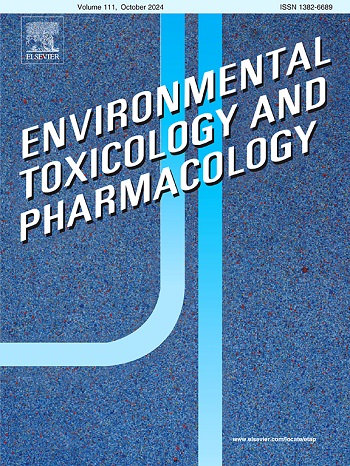Evaluation of the interaction between the pesticides chlorantraniliprole and imidacloprid with the ATP-binding cassette transporter G2 (ABCG2): In vitro and in vivo assays
IF 4.2
3区 环境科学与生态学
Q2 ENVIRONMENTAL SCIENCES
引用次数: 0
Abstract
Pesticides used in agriculture to control pests can also affect non-target animals, such as livestock and humans, through exposure. Pesticide residues found in animal-derived products like milk serve as evidence of exposure in mammals and may pose health risks due to bioaccumulation. Understanding the mechanisms of elimination and toxicity of pesticides is essential to minimize their negative impact. The ATP-binding cassette (ABC) transporter ABCG2 is a membrane protein involved in xenobiotic biodisposition and milk secretion. Our purpose was to evaluate its role in the in vitro transport and secretion into milk of two pesticides: chlorantraniliprole and imidacloprid. Using MDCK–II cells transduced with ABCG2, we found that they are effectively transported by murine, ovine and bovine ABCG2. In vivo studies using wild-type and Abcg2-/- mice showed that milk concentration of chlorantraniliprole was affected by Abcg2, potentially leading to toxicological effects and contributing to unwanted xenobiotic residues in milk.
农药氯虫腈和吡虫啉与atp结合盒转运体G2 (ABCG2)的相互作用评价:体外和体内实验
农业中用于控制害虫的农药也可以通过接触影响非目标动物,如牲畜和人类。在牛奶等动物源性产品中发现的农药残留是哺乳动物接触农药的证据,并可能因生物积累而构成健康风险。了解农药的消除机制和毒性对减少其负面影响至关重要。atp结合盒(ABC)转运体ABCG2是一种参与异种生物处置和乳汁分泌的膜蛋白。我们的目的是评价它在氯虫腈和吡虫啉两种农药的体外转运和分泌到乳汁中的作用。使用ABCG2转导的MDCK-II细胞,我们发现它们可以被小鼠、羊和牛的ABCG2有效地转运。使用野生型和Abcg2-/-小鼠进行的体内研究表明,Abcg2会影响牛奶中氯虫腈的浓度,可能导致毒理学效应,并导致牛奶中有害的外源残留。
本文章由计算机程序翻译,如有差异,请以英文原文为准。
求助全文
约1分钟内获得全文
求助全文
来源期刊
CiteScore
7.00
自引率
4.70%
发文量
185
审稿时长
34 days
期刊介绍:
Environmental Toxicology and Pharmacology publishes the results of studies concerning toxic and pharmacological effects of (human and veterinary) drugs and of environmental contaminants in animals and man.
Areas of special interest are: molecular mechanisms of toxicity, biotransformation and toxicokinetics (including toxicokinetic modelling), molecular, biochemical and physiological mechanisms explaining differences in sensitivity between species and individuals, the characterisation of pathophysiological models and mechanisms involved in the development of effects and the identification of biological markers that can be used to study exposure and effects in man and animals.
In addition to full length papers, short communications, full-length reviews and mini-reviews, Environmental Toxicology and Pharmacology will publish in depth assessments of special problem areas. The latter publications may exceed the length of a full length paper three to fourfold. A basic requirement is that the assessments are made under the auspices of international groups of leading experts in the fields concerned. The information examined may either consist of data that were already published, or of new data that were obtained within the framework of collaborative research programmes. Provision is also made for the acceptance of minireviews on (classes of) compounds, toxicities or mechanisms, debating recent advances in rapidly developing fields that fall within the scope of the journal.

 求助内容:
求助内容: 应助结果提醒方式:
应助结果提醒方式:


